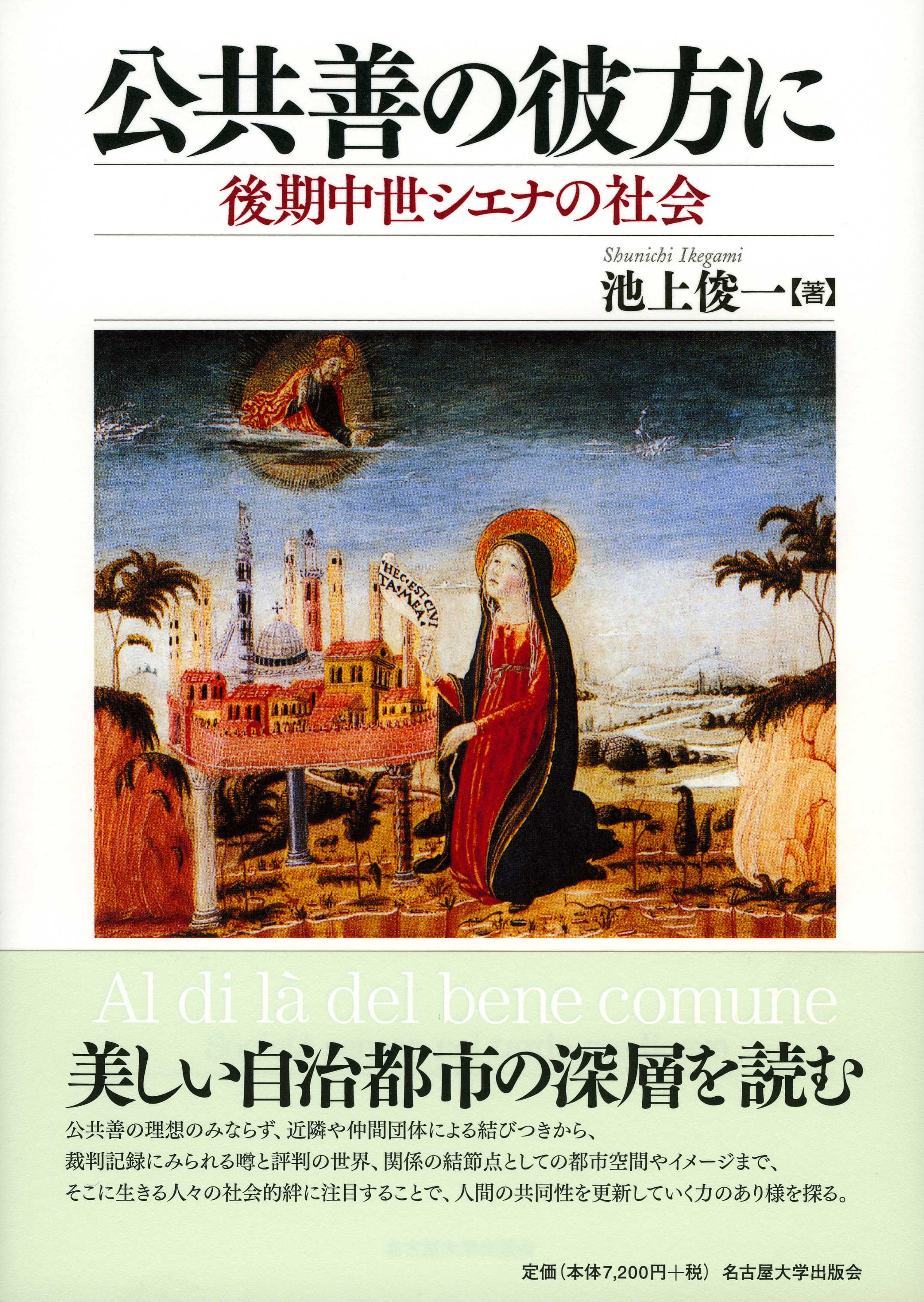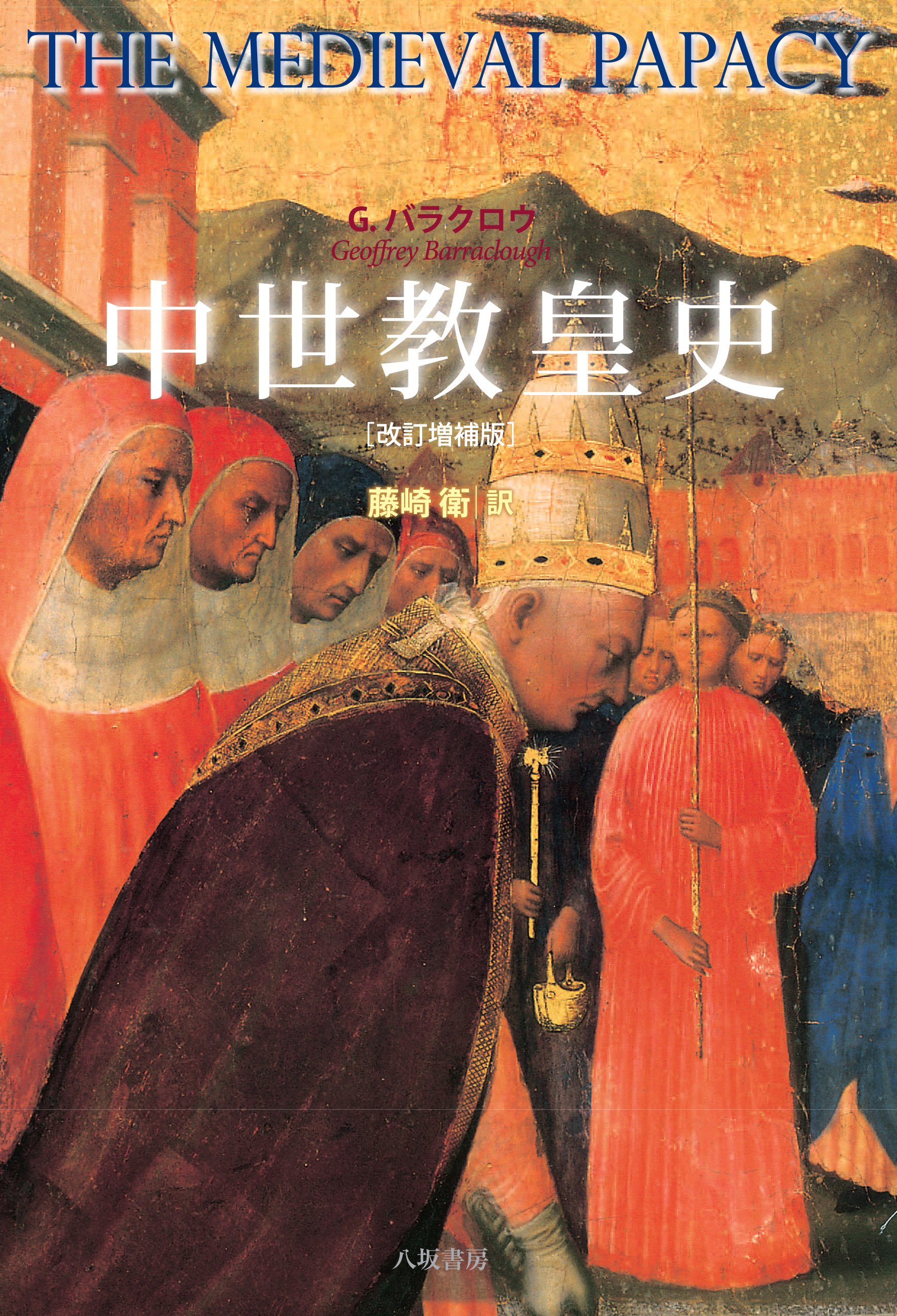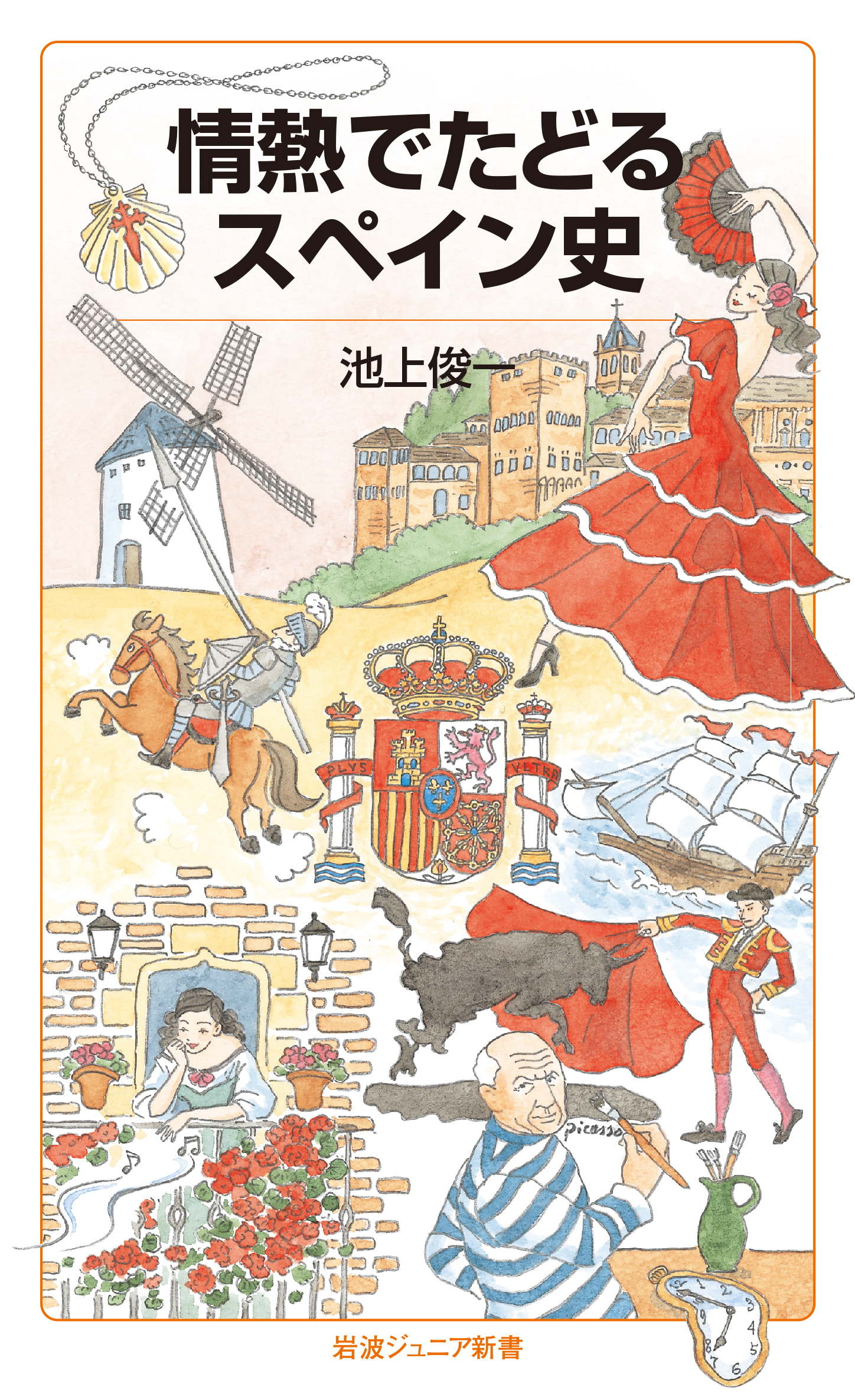
Title
Kokyozen no Kanatani (Beyond Common Good – Sienese society in the late medieval period)
Size
602 pages, A5 format, hardcover
Language
Japanese
Released
February 28, 2014
ISBN
978-4-8158-0765-8
Published by
The University of Nagoya Press
Book Info
See Book Availability at Library
Japanese Page
The objective of this book is to use the keyword “common good” to elucidate the relationship between the political system and the social bonds that existed in late medieval Siena, a beautiful ancient city located atop a small hill in the Tuscan region of central-northern Italy.
In Siena, even during the era of the Noveschi (1287–1355), a nine-person governance system that is sometimes referred to as the ideal form of governance, the nobility and the affluent bourgeoisie were constantly fighting for leadership, as was the case in other Italian city-states, and there was also intermittent conflict and class warfare between the wealthy class and the poor laborers. These battles within the city overlapped with external territorial disputes and fights for supremacy with other cities. These were also pursued in conjunction with movements that were either loyal to or breaking away from the higher authorities and powers—the emperor or king and the Pope—thereby presenting a complex situation. Those who came to power tried to somehow restore order, and so they instituted one law after another, conducted trials, and tightened their defenses.
However, while it may appear at first glance that the Sienese citizens exhibited a spirit of self-interest and partisanship, at the same time it is a fact that they volunteered for the public welfare and for honor. This likely relates to the political ideal of the commune that developed in the period between the Greek polis and the modern nation-state, and above all to the concept of the common good that represents the commune’s essence. It is thus thought that without examining this unique form of sociability that was woven among the city’s resident at that time, it is impossible to fully understand this extraordinary phenomenon.
For that reason, while keeping in mind what it was that the city was seeking as an ideal as well as the various patterns of people’s social relations and social bonds, this book examines political and social relations from five perspectives as it explores the hidden potential in this medieval commune.
The point that we must pay close attention to in terms of the primary theme of this book, the transformation of the common good in cities, is that in the communal state of Siena, the reason for the emergence of a bottom-up or in other words a popular common-good concept, as opposed to a common good imposed from above by the authorities in charge or the elites, was the existence in Siena of potent and tightly interwoven “holy bonds of human relations.”
When we think about these social bonds, the most important thing to consider is the role of the Santa Maria della Scala hospital, one of the world’s largest charitable facilities, which is located in Siena. This hospital was supported primarily by the laymen and laywomen who brought nothing but their abundant piety, acting like brothers and sisters. And we can infer that the network of the myriad faithful who belonged to the various types of organizations that surrounded this hospital intersected and overlapped with other forms of social bonds and organization, while at the same time transforming the ideal order of the city and the way in which they provided for the common good.
In addition to being an empirical study of Siena history that thoroughly examines documents in historical archives, this book is also notable in that its scope offers a fresh point of view on the history of European cities, cultural history, and social history.
(Written by IKEGAMI Shunichi, Professor, Graduate School of Arts and Sciences / 2017)



 Find a book
Find a book






